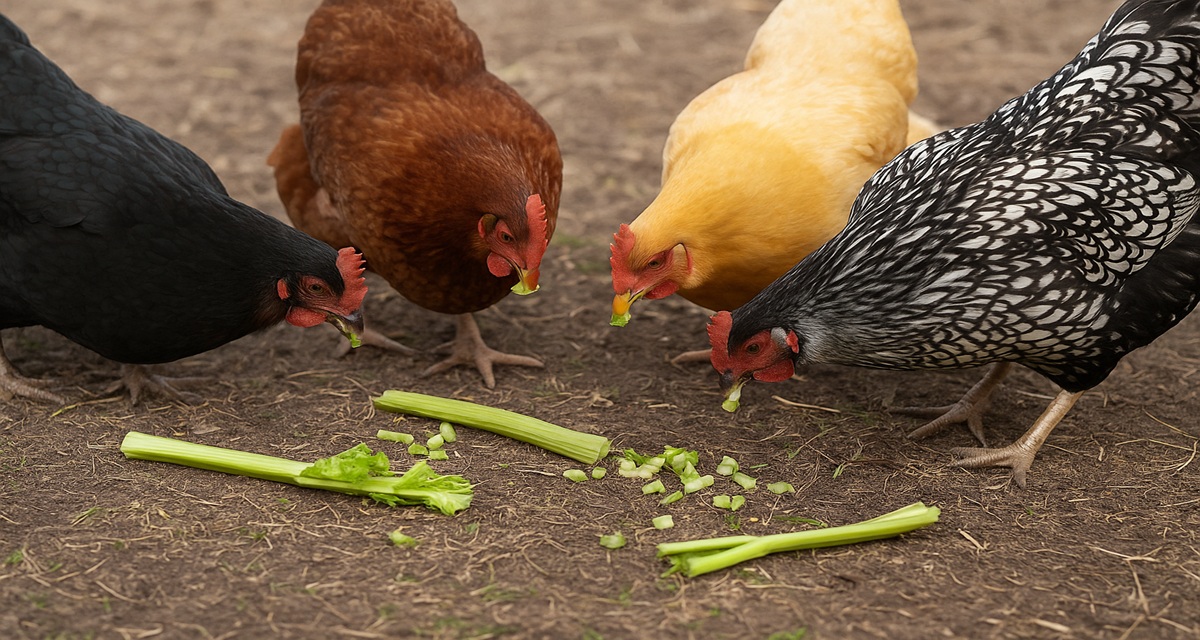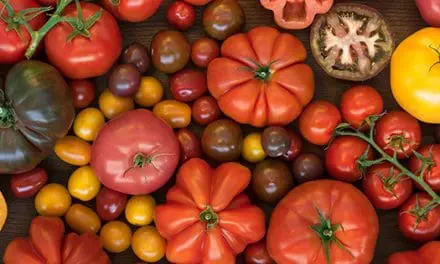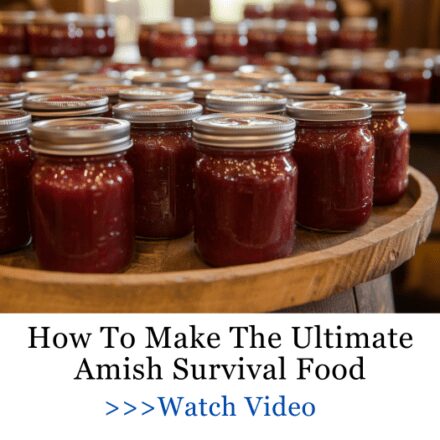When you’re raising chickens, it’s natural to wonder which foods from your own kitchen or garden can be shared with the flock. Celery often comes up in these conversations because it’s common, inexpensive, and full of nutrients. But is it safe for chickens to eat? The answer is yes—chickens can eat celery. However, there are some important things to keep in mind before tossing those stalks into the coop.
Chickens are curious eaters, and they’ll peck at nearly anything you offer them. That doesn’t mean everything is equally safe or beneficial. Knowing the ins and outs of specific foods like celery helps you avoid potential issues while also maximizing the health benefits for your birds.
For a self-sufficient homesteader, celery is one of those “bonus crops” that can feed both people and poultry. Instead of tossing the leafy tops or trimmed ends into the compost pile, you can reroute those scraps into the chicken yard. This not only reduces waste but also gives your birds a nutrient boost.
Nutritional Value of Celery
Celery is low in calories but rich in beneficial nutrients. It contains:
- Vitamins A, C, and K that support immune health and strong bones.
- Antioxidants that help reduce inflammation.
- Fiber that aids digestion.
- Water content that helps keep chickens hydrated, especially in the summer.
While celery won’t replace their need for balanced feed, it can be a healthy addition when given as part of a varied diet. Think of it as a supplement rather than a staple.
The leafy greens attached to celery stalks are particularly nutritious, offering more concentrated vitamins than the crunchy stems. Many chicken keepers notice their birds prefer the softer tops to the tougher stalks. Both can be fed safely, but leaves are easier to manage and quicker for the flock to consume.
It’s worth noting that celery can serve as a seasonal hydration booster. During hot summer days, offering cool chopped celery alongside their regular feed can encourage water intake and prevent heat stress—a common problem for backyard flocks in warmer climates.
The Stringy Texture Issue
One reason celery gets mixed reviews in chicken coops is its fibrous, stringy texture. Chickens don’t have teeth, so long strings of celery can be hard to break down. In some cases, the strings can even pose a minor choking hazard.
To make celery safe and easy to eat:
- Chop it into small pieces before serving.
- Remove tough outer strings if possible.
- Mix it into other treats like chopped fruits, grains, or greens to make it more appealing.
This simple step ensures your flock enjoys the nutritional benefits without struggling to peck through stringy stalks.
Think of celery as more of a “side dish” than a main course. By dicing it into small bits, you make it easy for your chickens to pick up, swallow, and digest. This prevents wasted food and keeps your flock interested in the treat.
If you notice your chickens ignoring celery stalks left whole, don’t be surprised—they may not want to fight through the tough texture. Preparing it properly shows the difference between food that goes uneaten and food that becomes a coop favorite.
Moderation Is Key
Even though celery is safe, it should be given in moderation. Chickens thrive on a balanced diet of quality feed that meets their protein, calcium, and energy needs. Treats—including vegetables like celery—should make up no more than 10% of their overall diet.
Overloading on celery (or any single veggie) can dilute the nutritional balance your flock relies on. Small handfuls offered a few times a week are more than enough.
Too many watery vegetables can also loosen droppings, leading to messy coops and potential health issues. By keeping portions small and occasional, you’ll avoid upsetting their digestion while still giving them a treat they can enjoy.
Moderation also teaches your flock variety. Just like humans, chickens can get picky if offered the same extras all the time. Rotating celery with other vegetables, grains, or protein-rich scraps ensures they get a well-rounded diet.
Benefits of Adding Celery to the Diet
When fed correctly, celery can provide some nice benefits for your flock:
- Supports hydration because of its high water content.
- Boosts digestion with its fiber.
- Adds variety to their diet, keeping chickens curious and active.
- Reduces food waste—you can repurpose kitchen scraps into flock snacks.
On a homestead, using every part of your harvest matters. Celery leaves, tops, and even trimmed ends that you might normally toss can be chopped and shared with your birds.
A flock that receives occasional variety in their diet is also easier to manage. Chickens that are stimulated with new tastes and textures tend to stay busier and less prone to pecking each other out of boredom. Celery fits nicely into that enrichment strategy.
Plus, feeding scraps like celery is a practical way to stretch your food budget. Instead of throwing those extras away, you’re converting them into eggs—a direct return on your investment in both food and flock.
What to Avoid
While celery itself is safe, don’t feed chickens:
- Spoiled or moldy celery—this can make them sick.
- Celery cooked in sauces or butter—chickens don’t need added salt, fats, or seasonings.
Stick to plain, raw celery served in small, manageable pieces.
Even healthy foods can cause harm if fed improperly. Always check scraps before tossing them into the coop. Mold and rot can introduce toxins that compromise your chickens’ health quickly. Prevention here is simple—feed only what you would feel comfortable eating yourself.
Also remember that chickens don’t process oils, salts, and sugars the way humans do. Cooked or seasoned celery may taste fine at the dinner table, but for your flock, those extras are unnecessary and potentially dangerous. Simplicity is best when feeding any garden surplus.
Final Thoughts
So, can chickens eat celery? Absolutely. It’s safe, nutritious, and a smart way to make use of scraps from your kitchen or garden. Just remember to chop it finely, feed it in moderation, and keep their main diet focused on high-quality feed. By doing this, you’ll not only provide a little variety to their meals but also stretch the value of your food supply—something every self-sufficient homesteader appreciates.
Chickens that are fed thoughtfully live healthier, produce better eggs, and remain more active. Adding safe extras like celery is one more step toward creating a resilient, self-sufficient homestead where nothing goes to waste.
At the end of the day, your flock depends on you to provide the balance they need. When you make careful decisions about what scraps to feed, you’re not only protecting their health but also ensuring that every corner of your homestead works together for sustainability.
How to Take Care of Your Livestock When They Are Sick (Video)
Can You Catch Bird Flu From Chickens? What No One’s Telling You
Never Feed THIS to Your Chickens
Best Automatic Chicken Coop Door Opener: Stress-Free Flock Keeping














